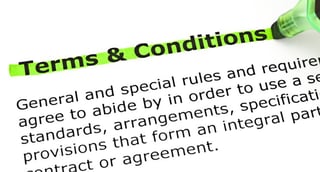In order to comply with ASC 606, the new revenue standard, your firm may literally have to change the way it does business. And it all starts with the terms of your engagements. Let’s quickly review how we got here and what you’ll need to consider going forward.
What led to the change?
To date, revenue accounting models have been highly industry-specific or even transaction-specific. There are all sorts of technicalities around whether, and when, your product should be considered a product or a service. This has led to different accounting methods for transactions that are actually economically similar. It also led to varying revenue recognition patterns that didn’t accurately reflect business performance - which upset (or confused) auditors, investors and anyone interested in acquiring a company.
What the gist of the change?
Under the new standard, ASC 606, the entire revenue process, from contract initiation to cash collection, is aligned with the new five-step revenue model. That model requires the use of more judgment and estimates on your part. As a result, systems, processes and controls for tasks such as identifying deliverables, assessing contract modifications and estimating variable consideration will need to be evaluated and perhaps changed.
How may my approach to engagements change?
The following are the main considerations to be aware of as you structure your customer engagements.
1 - What exactly am I delivering?
Until now, the line between the delivery of products and services was often blurred. Take for example, a software reseller who may bundle implementation, training and customization services with the sale of the software. Under the new model, you must identify each unique deliverable in the contract with your customer.
2 - Is it distinct or a bundle?
The new standard does make provisions for bundling products or services, if the particular products or services are highly interrelated, as could be the case if for example, our software reseller is providing a highly-customized solution. We took a closer look at the distinct or bundling dilemma here.
3 - What is the transaction price?
Naturally, your contract states a price your customer will pay for the products and services you spell out. Things can get tricky, though, when you factor in work performed on a time and material basis, financing considerations, performance bonuses, penalties or rebates. The standards spell out in detailed fashion how you should go about determining a transaction price, and how to handle complicating factors such as discounts and change orders.
4 - When is it done?
Under the new standard, your firm is to recognize revenue when you transfer the goods or services into the hands of your customer. Determining just when a service is transferred, however, is not always a straightforward task, especially if the services are performed over time. While the standards go into great detail regarding this step, it may ultimately prove the most challenging step for companies to get right.
Summary
Changes to the way revenue is recognized could have broad business impacts to how your firm operates. Everything from income taxes, compensation arrangements, through budgeting and forecasting, and down to your business management software needs consideration and perhaps minor or major adjustments. The transition to ASC 606 can be a hectic and confusing time for businesses. Your CPA and other professional advisors are ready to help you take the necessary steps to ensure your organization is in compliance with the new mandates.
By BTerrell Group, Texas- based Intacct Partner
